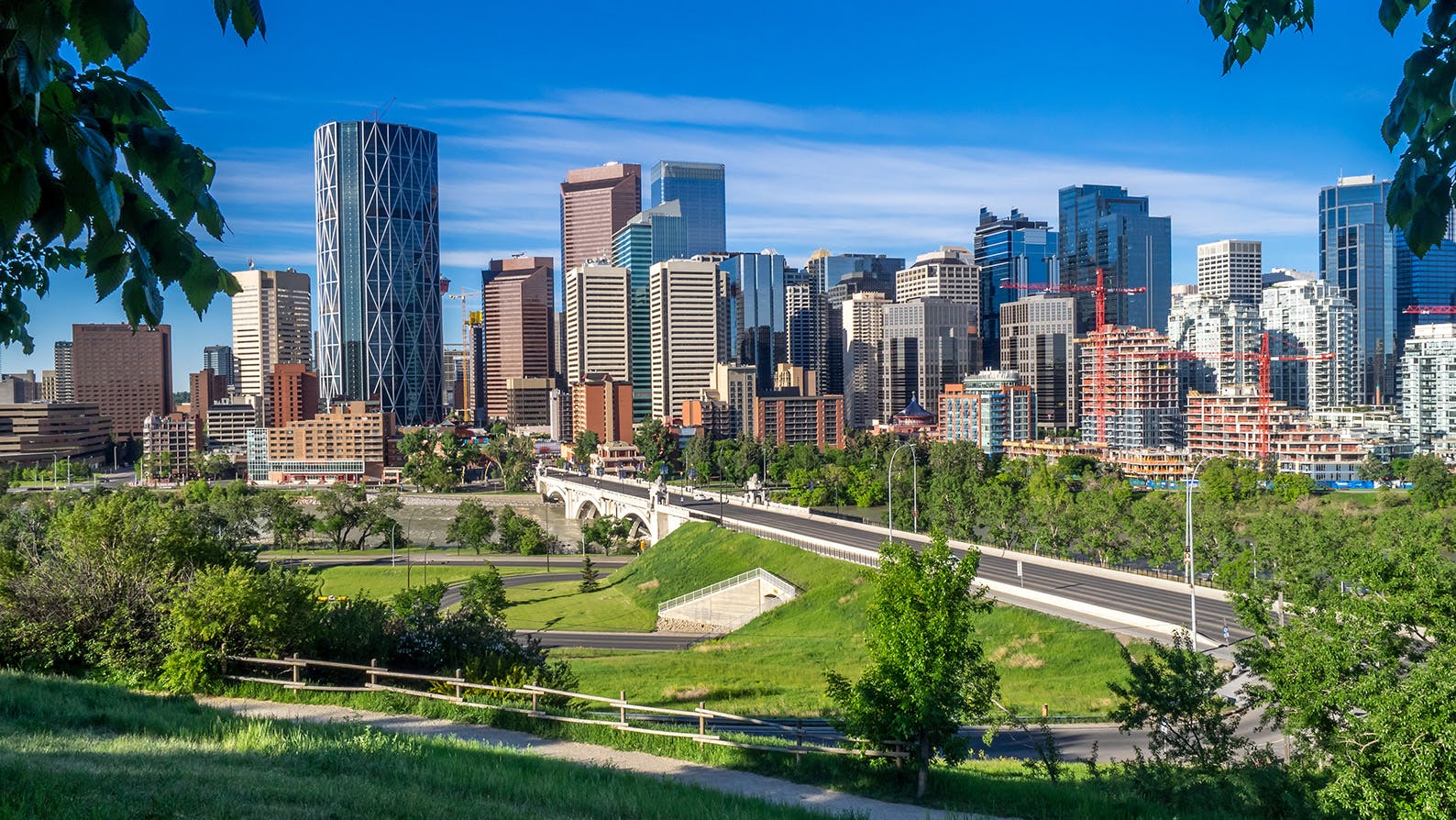Content from this article originally appeared in Calgary Herald as a column from Calgary Chamber President and CEO, Deborah Yedlin.
Calgary has always been a city that’s been good at starting something. As we come out of seven lean years brought on by a collapse in oil prices followed by the COVID-19 pandemic, there are many signs that we are starting something. Again.
Whether it’s the University of Calgary’s new campaign that urges students, faculty and staff to “start something,” the fact other cities around the world are paying attention to office conversion plans underway, or that community leaders have spearheaded the largest ever reinvestment in Calgary’s arts infrastructure, exciting things are happening. And that’s before adding up all the investment flowing into Calgary-based startups supporting our economic diversification or the prospect of new real estate developments proposed for downtown.
Last week, following the release of the provincial government’s Calgary Office Revitalization and Expansion working group report, the Calgary Chamber of Commerce hosted a breakfast to talk about Calgary, with Jobs Minister Doug Schweitzer, Mayor Jyoti Gondek and Brett Colvin, co-founder of legal services startup, Goodlawyer.
The sentiment in the room and after the panel discussion was best summed up by Alex Sarian, president and CEO of Arts Commons, a newcomer to Calgary who says he has been selling Calgary to Calgarians since his pre-COVID arrival. But this time, Sarian had another observation, and it’s telling: we are no longer comparing ourselves to other cities, but forging our own path, which is being noticed. We are not trying to be the next Austin, Denver, Detroit or Pittsburgh. We are becoming a new and improved version of Calgary, incorporating some of the elements that have grounded the resurgence of those cities, but we own our unique brand.
This is pivotal because it’s turning heads outside the city.
A recent BBC article stated: “There is, perhaps, no city in the world that has taken on the challenge of converting outdated office stock into residential units as aggressively as Calgary.” That might be because we have faced the vexing problem of empty office space longer than other cities, trying to figure out what will sustainably reinject much needed vibrancy into the core. But we have survived, with a vacancy rate twice that of Detroit’s when it filed for bankruptcy in 2013.
And now, thanks to true Calgarian perseverance, we are hitting our inflection point. According to Avison Young, Calgary has posted the second-strongest recovery in terms of downtown foot traffic, post-pandemic, among six Canadian cities.
It used to be Calgarians primarily spoke energy: oil and natural gas prices, number of wells being drilled, production. But over the last several years Calgarians have become equally well versed in the office vacancy lingo: how many square feet, price per square foot, what that represents in terms of total inventory, the proportion between Class A space and the rest. Also part of the vocabulary is the impact on the city’s tax base as downtown valuations have declined — not to mention what it means for the businesses that support the downtown office traffic, small and large.
For a time, the focus was on how to fill those buildings, with the energy sector as the driving force behind a revival in occupancy. But as price takers in a rapidly evolving industry, that window is much smaller. With advancements in innovation and the adoption of technology, companies are producing more barrels with fewer employees.
In response, Calgary has started something.
In fact, last year the University of Calgary created more startups than the University of Toronto or Waterloo. The Creative Destruction Labs-Rockies at the Haskayne School of Business has generated $1.7 billion in value since its establishment in 2017. When CDL founder Ajay Agrawal was recently in Calgary, he noted this city is home to some of the most entrepreneurial minds in Canada. Even better, others outside Calgary are seeing it too.
How CDL-Rockies came to life is emblematic of how things happen in Calgary. It started with one idea, brought forward by one individual who convened a group of community and business leaders at the Calgary Petroleum Club to kick off a path to meaningful economic diversification, with UCalgary as an important node.
It’s working.
In 2021, Calgary attracted more tech talent than any other city in Canada and was ahead of U.S. cities including San Francisco, Seattle and New York. There are unicorns in our midst, the latest addition being Neo Financial. And we are actively building a talent base, whether through retraining initiatives led by AltaML, additional computer science spots being created at post-secondary institutions, or Calgary Economic Development’s Edge Up program. Thanks to the Pathways to Net Zero initiative, and the Energy Transition Centre backed by both public and private sector support, we are sending an important signal about the role Canada’s energy sector will play in the world’s energy future.
And while we’ve buried some pucks in the net, we’ve got a way to go until the Stanley Cup.
Much like a stock portfolio, the downtown of tomorrow needs to be diversified and sustainable. That means services to support not just office dwellers, but also students and families who want to live in dense, urban settings and not rely on a car. From student housing to cafes and restaurants, classrooms and innovation hubs, recreation facilities and vibrant entertainment venues, Calgary’s downtown can’t be one-dimensional. It must be connected and accessible, which means robust transit and addressing the ongoing problem of parking rates that rank among the highest in North America, even post-COVID.
Long before the Battle of Alberta was a reality, conversations in Calgary had changed. There is pride in our progress on economic diversification and a sense of optimism that has been absent since 2015. Step by step, change is afoot. And it’s because Calgarians have believed and invested enough in the future of their city to start something.





